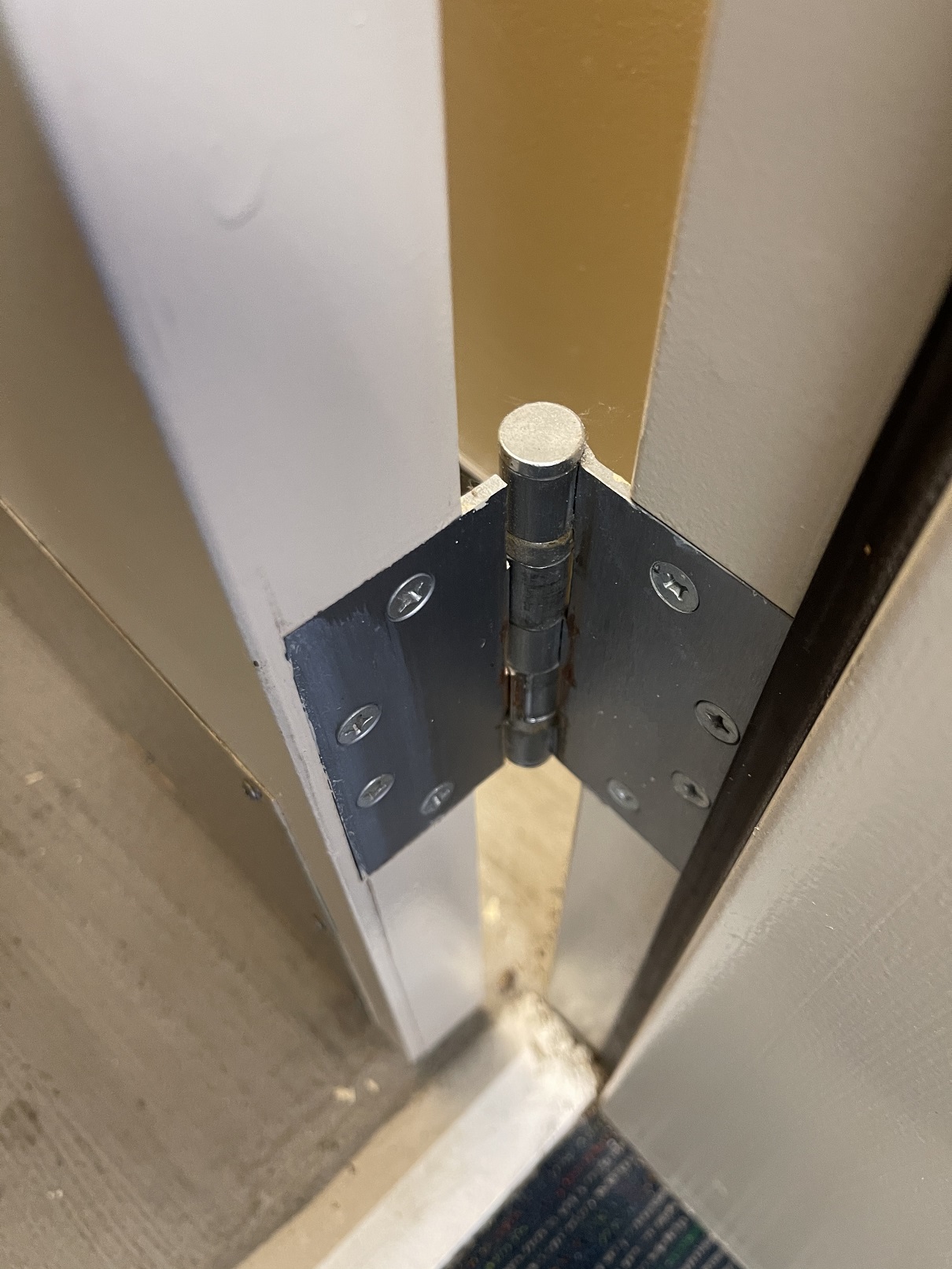Have you ever pointed out a door problem to someone and had them respond with a shrug and some form of “so what”? The grocery store exit is purposely blocked with carts…so what – people will just push them out of the way if there’s an emergency. A door closer is adjusted to have more force than is allowed by the accessibility standards…so what – someone will help the elderly person get the door open when they have trouble. A fire door is held open improperly…so what – chances are slim that the building will catch on fire today. What’s the big deal??
Here’s why these seemingly small things are a big deal. The code requirements aren’t just words in books – they exist because this is how we help to keep buildings safe. The codes have been written and rewritten because of past tragedies, and if we don’t follow them, we are disregarding what we should have learned from those events. A door problem may not seem like a big deal, but one problem leads to another, and there is no way to know whether the door will function properly when it needs to.
I’m thrilled to see that fire door assemblies have been getting more attention in recent years. They’re really important for life safety, even if most people don’t realize it. Fire door assembly inspectors are out there every day, making sure these opening protectives will do their job when the time comes. Hal Kelton of DOORDATA Solutions is a certified fire door assembly inspector, and he sent me these (Gotta) Fix-it Friday photos.
At first glance, this hinge looks pretty good…
But this is what can happen when a door stop, broom handle, or other item is pushed into the gap between the open door and the frame to hold the door in the open position. A momentary action taken for convenience will affect the performance of this fire door until the problem is noted as a deficiency on an inspection report and then rectified. Without enforcement of the fire door inspection requirements, issues like this might never be addressed, and there’s no way to know whether the fire door asssembly will do its job. That’s the big deal.
Note: If annual fire door assembly inspections are not being enforced in a particular jurisdiction, this does not release a building owner or facility manager from the responsibility of maintaining a building’s fire door assemblies in code-compliant condition. Liability for deficient opening protectives does not depend on whether or not the assemblies have been inspected.
You need to login or register to bookmark/favorite this content.







Wow!! That is such a clean looking break! How does that happen?
Broom handle.
– Lori
I read an article about OSHA regulations. During a class, inspectors chuckled when the instructor mentioned the industry pushback when OSHA banned storing toxic and hazardous materials in the crews sleeping quarters. The instructor explained that the companies thought that was an acceptable way to store hazardous materials which might harm cargo if placed in the cargo hold. He said regardless of legislating common sense, safety regulations are almost always written in blood, e.g. someone died before the regulation was written. Or in this case, written in ashes.
Due to the frequency of door damage from broom and mop handles being used to hold open fire doors, one of our hospital clients requested that we specify continuous hinges on such doors to deter this practice.
A finger guard could also be a good solution.
I have seen many steel doors dented at the hinge stile from this practice, but I do not see any indentation on the door edge in this photo. Also, I would expect the hinge reinforcement plates in the steel door & frame system, to fail well before a steel hinge would break. Now, I do see rust at the hinge barrel, but again, a break like this is totally unexpected.
What is the pressure exerted on the hinge under this condition?
I think that hinge was cut. Steel door and frame hinge plates are not robust enough to stay straight through the force required to break the hinge. Hinge screw heads would have popped off before the hinge leaf would break. I have seen a lot of damage from stuff shoved in the hinge side of the door, but a break like that with no damage to the door and frame is unlikely.
it may be a cheap non UL hinge. I do not see any brand name or logo.
Hi Alex –
I took off the logo as I usually do. It’s a UL-listed hinge.
– Lori
Over the years we are seeing this more and more. I agree with Jerry and Ryan. The force needed to break the hinge would have made the door no longer fit in the frame. We have been called back to jobs for just this situation. We take one look at the frame and it is obvious they stuck something in to keep the door open. One quick look and you can see the reinforcment bent and the door hitting the frame, they give way before the hinge would fail.
I’m just reading this about a month later, but I am legitimately surprised no one has used this old chestnut:
“Codes tell you the worst possible building you’re allowed to legally build.”
As much as codes are frustrating for those who design to them, nothing frustrates like the users who actively attempt to thwart our designs.